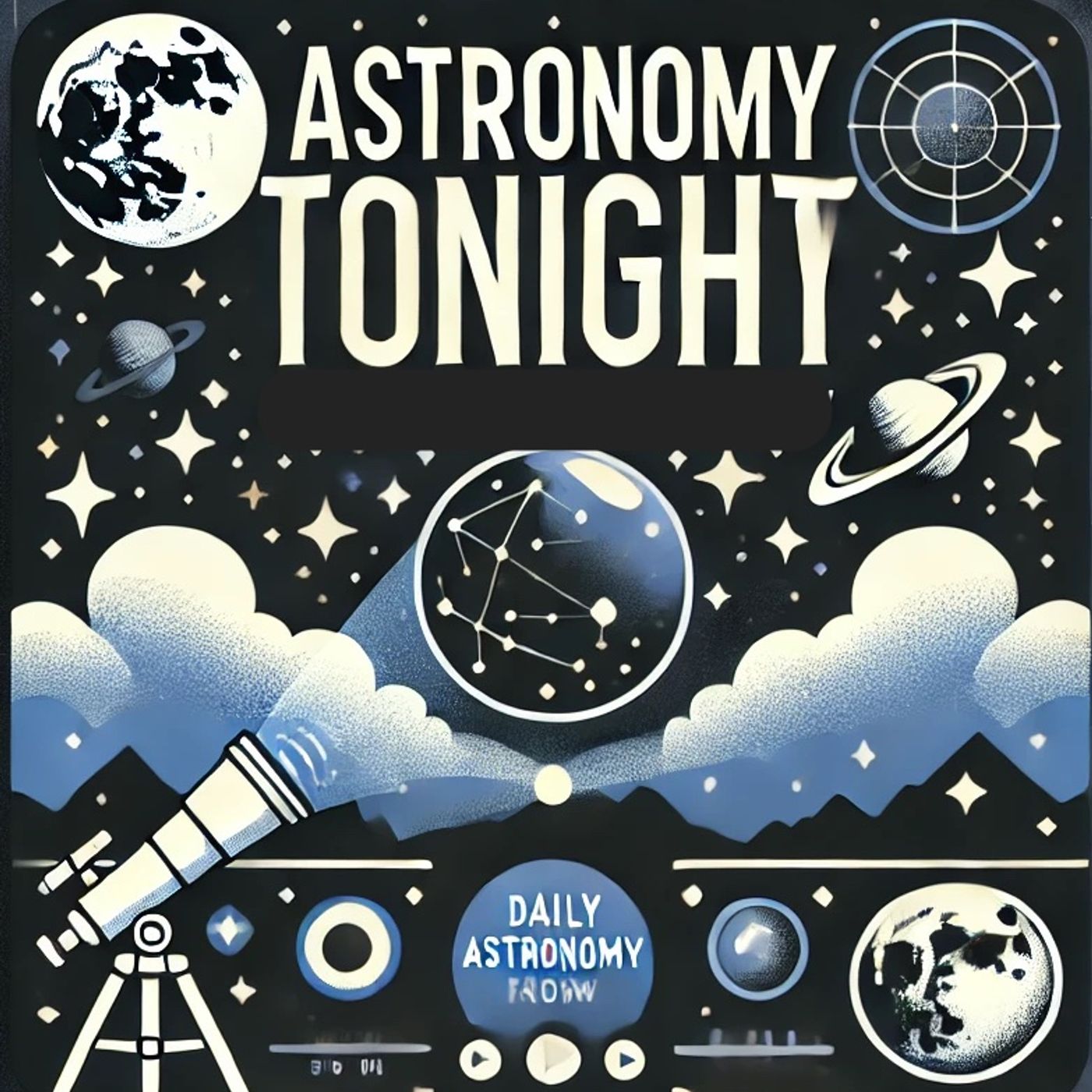Quasar Unveiled: A Cosmic Revelation at Palomar Observatory
Update: 2025-09-28
Description
This is your Astronomy Tonight podcast.
On September 28th, 1962, a truly remarkable event occurred in the world of astronomy that would forever change our understanding of the cosmos. On this date, a team of astronomers at the Palomar Observatory in California, led by the indefatigable Rudolph Minkowski, captured the first-ever spectra of a quasar.
Now, you might be thinking, "What's the big deal about a quasar spectrum?" Well, let me tell you, this was no ordinary celestial observation. Quasars, or quasi-stellar objects, had only been discovered a few years earlier, and they were baffling astronomers with their intense brightness and mysterious nature.
The quasar in question, 3C 273, appeared like a faint star in optical telescopes, but it was pumping out an enormous amount of radio waves. When Minkowski and his team analyzed its spectrum, they were shocked to find that its spectral lines were significantly redshifted. This meant that 3C 273 was incredibly far away from Earth – billions of light-years distant!
This discovery was nothing short of revolutionary. It implied that quasars were not only the most distant objects ever observed at that time but also the most luminous. To be visible from such vast distances, these cosmic beacons had to be producing energy on a scale that defied imagination.
The observation of 3C 273's spectrum opened up a whole new field of study in astronomy. It led to the realization that quasars are powered by supermassive black holes at the centers of galaxies, gobbling up surrounding matter and converting it into pure energy with mind-boggling efficiency.
So, the next time you look up at the night sky, remember that on September 28th, 1962, a group of astronomers peered into the depths of the universe and unlocked one of its greatest mysteries. They showed us that the cosmos is far more vast, energetic, and awe-inspiring than we ever imagined.
And with that cosmic food for thought, we wrap up today's episode. If you enjoyed this celestial journey, please don't forget to subscribe to the Astronomy Tonight podcast. For more fascinating stories and mind-bending facts, check out QuietPlease.AI. Thank you for listening to another Quiet Please Production. Until next time, keep looking up!
This content was created in partnership and with the help of Artificial Intelligence AI
On September 28th, 1962, a truly remarkable event occurred in the world of astronomy that would forever change our understanding of the cosmos. On this date, a team of astronomers at the Palomar Observatory in California, led by the indefatigable Rudolph Minkowski, captured the first-ever spectra of a quasar.
Now, you might be thinking, "What's the big deal about a quasar spectrum?" Well, let me tell you, this was no ordinary celestial observation. Quasars, or quasi-stellar objects, had only been discovered a few years earlier, and they were baffling astronomers with their intense brightness and mysterious nature.
The quasar in question, 3C 273, appeared like a faint star in optical telescopes, but it was pumping out an enormous amount of radio waves. When Minkowski and his team analyzed its spectrum, they were shocked to find that its spectral lines were significantly redshifted. This meant that 3C 273 was incredibly far away from Earth – billions of light-years distant!
This discovery was nothing short of revolutionary. It implied that quasars were not only the most distant objects ever observed at that time but also the most luminous. To be visible from such vast distances, these cosmic beacons had to be producing energy on a scale that defied imagination.
The observation of 3C 273's spectrum opened up a whole new field of study in astronomy. It led to the realization that quasars are powered by supermassive black holes at the centers of galaxies, gobbling up surrounding matter and converting it into pure energy with mind-boggling efficiency.
So, the next time you look up at the night sky, remember that on September 28th, 1962, a group of astronomers peered into the depths of the universe and unlocked one of its greatest mysteries. They showed us that the cosmos is far more vast, energetic, and awe-inspiring than we ever imagined.
And with that cosmic food for thought, we wrap up today's episode. If you enjoyed this celestial journey, please don't forget to subscribe to the Astronomy Tonight podcast. For more fascinating stories and mind-bending facts, check out QuietPlease.AI. Thank you for listening to another Quiet Please Production. Until next time, keep looking up!
This content was created in partnership and with the help of Artificial Intelligence AI
Comments
In Channel





